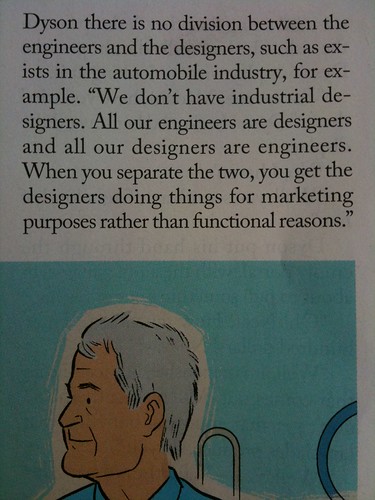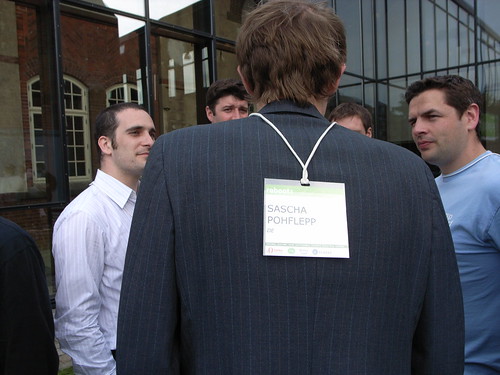An interesting article by John Seabrook in the occasional “Annals of Invention” column of The New Yorker just now with James Dyson — the guy who made vacuum cleaners suck better.
I captured this above while reading it on a short flight up to San Jose last weekend, afraid that I might not come back with the magazine and not wanting to get all messy and tear it up and then thinking that if I had the image, it’d compel me to jot it on the blog rather than squirrel it away in a drawer somewhere.
This is what he says:
Why do I blog this? The point of the relationship amongst engineering and design is something I’m quite interested in — that there should be some intense entanglements between the two roles and certainly not separated, but in constant dialogue. For instance — engineers should be better at telling the stories of their ideas and embedding them into the situations and practices of normal humans’ lives. Designers would do better design if they internalized the instrumental aspects of their craft rather than the gratuitous and the surface features. I had only clipped the part of this quote that started with “Dyson there is no division between the engineers and designers..” so I only now saw in the digital edition of the magazine that he says — “the engineering leads the design.” and I’m not entirely sure how I feel about that. I don’t think one should lead the other, although I do think that engineering has so much power and influence and hubris that it should try to humble itself and develop some really good listening skills and not expect that — just because you can think of something and it’s clever that it should be done like, for example Augmented Reality. ((Doorknobs looking for houses to fit on.))
This is a good read if you’re interested in these sorts of things. I think James Dyson has done a lot to put “wheels on luggage” with simple, left-field innovations, making things a little better than they are.


